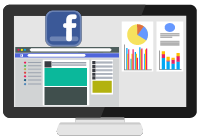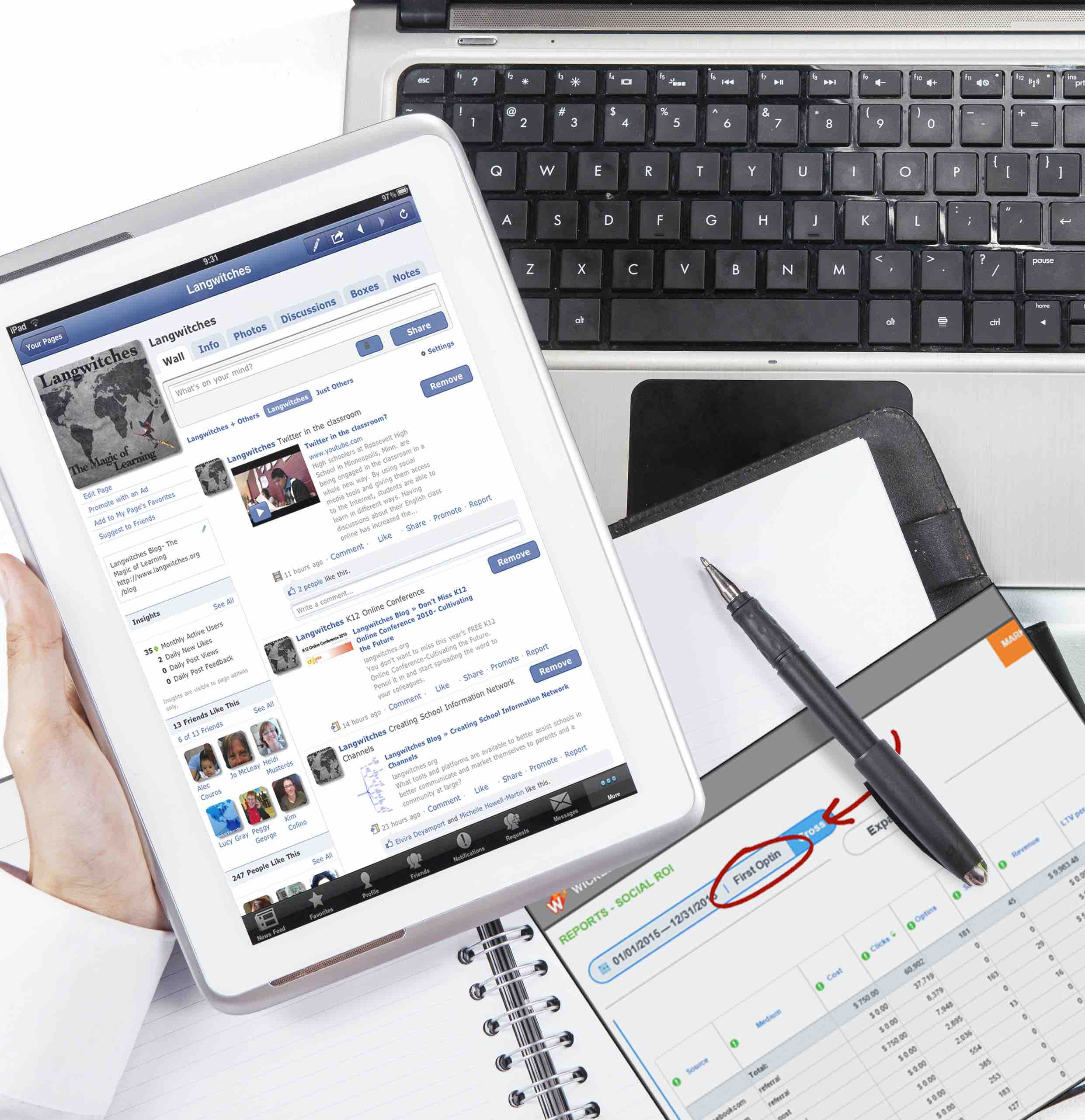To follow up on our last post we’ll examine some typical customer click paths and demonstrate the challenges of traditional last-click conversion tracking. We’re going to follow a lead called Maximus for a fictitious company, “Wicked Good Juice (WGJ).” Their online marketing efforts will convert Maximus across four possible customer journeys from prospect to buyer. Maximus is a young man, 20 years old, who likes the Boston Red Sox. Today we’ll examine the first customer path.
Customer Conversion Path #1
This path tracks a lead for a few months during which he is exposed to a hodgepodge
of advertising and email until he finally makes a purchase.
WGJ’s marketing efforts include Facebook ads to website, Facebook ads to lead generation pages, Facebook video ads, AdWords display ads, and Emails all mixed together for 10 weeks.
- January 1, 2016: Maximus goes on Facebook and triggers a Wicked Good Juice ad because he fits their demographic profile. He clicks on the ad, goes to WGJ’s website, clicks around for a minute and leaves.
- February 5, 2015: ESPN.com shows Maximus a Google display ad for Wicked Good Juice in the top left corner. He does not actually see the ad, however, because he is reading how the Bruins shut out the Canadiens.
- February 14, 2016: Returning to Facebook, Maximus is retargeted with a WGJ ad because he visited the company’s web site within 90 days. The ad says, “Free Report –Top 5 Ways Wicked Good Juice is Wicked Good.” Maximus wants to learn more and gives WickedGoodJuice.com his email address.
- February 17, 2016: Once again on Facebook, Maximus triggers a WGJ ad because he is male and lives in the USA (adset name “US-Male-All”). The ad is called “Juice Webinar: Look 10 years younger. One glass of juice is all you need.” He signs up for the webinar with his email address.
- February 21, 2016: Maximus receives an email from WickedGoodJuice.com with a buy-one-get-one offer. He opens the offer but does not click.
- March 1, 2016—10:00 pm: Going on Facebook, Maximus triggers a WGJ ad because he belongs to a custom audience—the Wicked Good Juice Email List. The video ad offers “20% off great juice.” It tells him how good the juice is and that there is a 20%-off sale going on if he clicks on the link. He watches the video but does not click.
- March 2, 2016—noon: Maximus wakes up thirsty after dreaming about drinking juice and finds an email from Wicked Good Juice called, “Today is a good day for juice.” He clicks on it but then remembers the sales email that would save him money. He searches his email for “great juice,” finds the February 21st email for the BOGO special, clicks on it and purchases.
Which Ads Report Conversions?
The question for Customer Conversion Path #1 is, which ads report conversions? Let’s take a look:
- The Google Display network ad on ESPN.com shows a sales conversion.
- The Facebook video ad on “20% off great juice” for the adset “Wicked Good Juice Email List” shows a view-through conversion.
- Maximus’ email service provider will show a conversion if it tracks those things.
You see the problem: All three conversions represent themselves as the last-click sales conversion event but that cannot be true.
Last-click attribution is supposed to tell you the last click your customer made before the sale. Maximus clicked on two emails on the day of his purchase. Watching the Facebook video ad might well have contributed to him finally making the purchase. The AdWords display ad that he ignored definitely did not contribute, but it still claims credit. The email was the actual last click before the purchase.
In terms of real business activity, here’s the really important question: Based on the conversion data from Customer Path #1, what will you do to find more customers? To answer that, you need three more pieces of information:
How did your customers first hear about you?
Wicked Good Juice does not get a good answer to this question. The January 1 ad made Maximus aware of the site, yet it will not show a conversion because it is outside of the Facebook attribution time window. Facebook conversion rules value the click closest to the sale.
What made the customer join your email list?
The ad on February 14 made Maximus join the email list but the conversions do not indicate that, either. Facebook uses last-click attribution, and another Facebook ad click is closer to the sale.
Since the nurture cycle from first contact to sale lasted ten weeks, Wicked Good Juice would also need to know if any ads motivated the customer to reoptin, or give his email address again. The February 17 webinar ad accomplished this but the existing conversions do not report it because Maximus viewed the video ad one day before the sale. Only if you look at the 28-day attribution window does this click override the video ad view.
What finally converted Maximus to make the sale?
Well, it’s complicated. He watched a Facebook video ad on March 1st, then clicked on a March 2nd email, then clicked on an email that was sent February 21st.
I give the last click conversion to the February 21st email with a sales assist to the March 2nd email and the March 1st video ad. Obviously, however, the last click before the sale—the February 21st email—did not succeed alone. It got a lot of help in acquiring and nurturing the customer before he took the final step and purchased. It's important to know this as well.
Next: In our next post we’ll analyze Customer Path #2.





